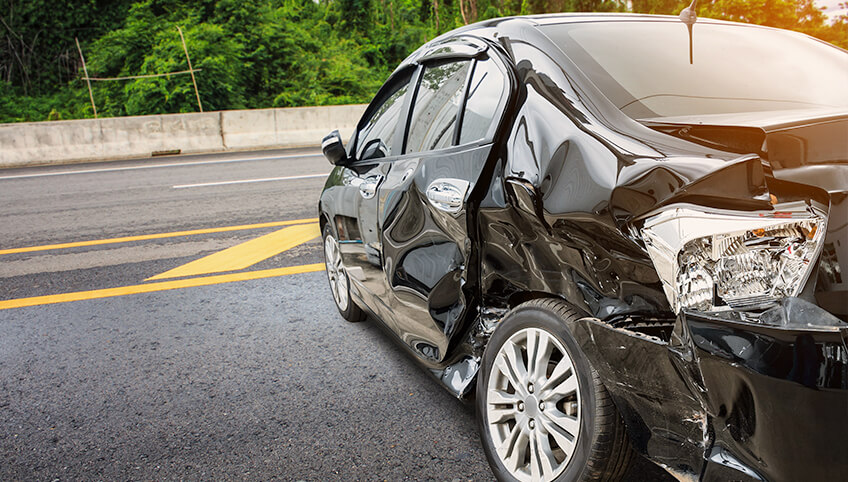
Raleigh Spinal Cord Injury Attorney Helps Ensure You Get the Surgery and Resources You Need
Car, truck, and motorcycle accidents, falls in the workplace, and other traumatic accidents often cause damage to the spine and spinal cord. This is frightening because spinal injuries can impact the entire body, and the damage is often permanent.
In some cases, doctors are able to aid in a spinal cord injury recovery by performing surgery to relieve at least some of the problems resulting from injuries to the back, neck, and spinal cord. An experienced Raleigh spinal cord injury attorney is familiar with most forms of treatment and the long-term effects. Even with treatment, spinal injuries can grow worse over time, so it is essential to ensure that you receive compensation to cover not only past and present needs but also to provide for future care and offset suffering and lost opportunities in the days and years ahead.
At Martin & Jones, we know how to work effectively to gain justice and full compensation when you are suffering spinal injuries caused by the negligence or recklessness of someone else. While every injury is unique, it is helpful to understand the types of surgery that may be necessary after a spinal injury and the health conditions related to injuries of the spine and spinal cord.
Spinal Surgery That May Be Necessary After an Accident
Surgeons try to correct problems, increase functioning, and relieve pain by performing many different types of spinal surgery. Procedures may be performed on the vertebrae that make up your spine or the disks and cartilage between vertebrae or on muscles or other tissue. Techniques might involve removing bone or other tissue, adding hardware for support, fusing bones together, or inserting artificial disks. Many times, the surgery is intended to create stability in the spine to prevent further damage and potentially allow the spinal cord to heal.
Foraminotomy
When compressed nerves cause pain or weakness, doctors may perform a foraminotomy to enlarge the area in the spinal column that is or may be causing the compression. This surgery is often used to treat spinal stenosis.
Laminectomy
If back or neck pain is extreme or there is clear damage to the spinal cord or other nerves, a patient may undergo a laminectomy that removes all or part of a vertebral bone that is putting pressure on the spinal cord or nerve roots. This surgery can potentially cause further nerve damage.
Lumbar Discectomy
During a discectomy, the surgeon removes all or part of the tissue in the disks between your vertebrae. These disks are designed to cushion the vertebrae from shock, but when disks get damaged, they can change shape, putting painful pressure on nerves. Removing tissue is intended to decrease the pressure and pain.
Lumbar Disk Replacement
As the name implies, lumbar disk replacement surgery involves replacing a damaged disk with an artificial disk composed of metal or a combination of plastic and metal. This may be used as an alternative to spinal fusion surgery.
Nucleoplasty
A nucleoplasty procedure is a more complex form of lumbar discectomy. Surgeons use a special laser to remove tissue from inside a spinal disk, heating the tissue to the point where it dissolves.
Spinal Fusion
One surgery commonly used to reduce pain and provide stability in the spine is spinal fusion. This procedure involves using metal plates, screws, or other hardware to fuse together two separate vertebrae into a single element. In some cases, bone may be taken from the hip to fuse vertebrae with a bone graft. While fusion surgery decreases the patient’s range of motion, it has the potential to provide pain relief.
Vertebroplasty and Kyphoplasty
A vertebroplasty involves injecting a medical form of cement into vertebrae to help strengthen the bones. This surgery is often used to treat fractured vertebrae. With a kyphoplasty surgery, a balloon-like device is inflated within the vertebrae before cement is injected. This additional step creates a larger cavity for the cement.
As noted above, spinal surgeries focus on the bones and tissue surrounding the spinal cord, but medical science does not currently offer a reliable way to repair damage to the spinal cord.
Paralysis and Other Conditions Stemming from Spinal Injuries
Because the spinal cord often does not heal when damaged, a spinal cord injury attorney knows that an accident victim who suffers paralysis and other effects may have to live with them permanently. Paralysis describes a condition where an individual is unable to move or feel certain parts of the body.
When a spinal cord injury occurs in the middle or lower areas of the spine, it may result in paraplegia, where the victim loses the use of their lower body. They are generally unable to walk and may or may not be incontinent and/or lose sexual function. If a spinal cord injury occurs higher on the spine, such as at the neck level, it can cause quadriplegia, leaving the victim unable to control or feel both the upper and lower body. In some cases, the victim may require assistance just to breathe.
In addition to paralysis, spinal injuries can cause debilitating pain and serious problems with blood circulation, which can then lead to additional complications. Spinal injuries often lead to a lifetime of intense medical care.
Assistance and Devices Needed After a Spinal Injury
Because it can be difficult or impossible to work or perform daily care tasks after an injury to the spine or spinal cord, accident victims with spinal injuries often need to rely on many types of assistance just to function. They often need help with preparing food or even the basic task of eating. If they have trouble breathing, they may need a ventilator or Continuous Positive Airway Pressure machine.
To avoid pressure sores and assist with mobility, individuals with spinal injuries often need a bed with electric controls that make repositioning easier. Then, they need transfer equipment to move them from the bed to a mobility device that enables them to get around, such as a wheelchair or scooter, and specialized transportation, such as a van that provides wheelchair access.
Other assistive devices that are often required after a spinal injury include:
- Positioning devices such as braces, splints, and backrests
- Shower benches
- Reaching devices
- Adapted silverware
- Toilet accessories
- Equipment to assist with opening windows and turning on lights
- Adapted door handles
Last but certainly not least, those with spinal injuries often need to make costly adaptations to their home or move to a different house.
Help Gaining the Resources to Function After a Spinal Injury
The difficulties of trying to manage life after a spinal injury are even harder to take when you know the injury could have been prevented. When someone’s irresponsible conduct triggered a truck accident or other accident that caused you to suffer injuries to your spine or spinal cord, a knowledgeable Raleigh spinal cord injury attorney at Martin & Jones can work to hold the responsible party liable for the harm they’ve caused.
Our experienced team understands the impact these injuries have on your life in the short and long term, and we fight to ensure that you receive the resources you need for the future, along with compensation to offset the damage to your quality of life and missed opportunities.
If you or a loved one suffered spinal injuries due to the irresponsible conduct of others, including medical malpractice, contact our team for a free consultation to learn how we can help you achieve justice and compensation for the future. To get started, call 800-662-1234 or contact us online now.
Need A Personal Injury Lawyer?
Helping injured people is what we do. Contact us today for a free consultation to find out how we can help you.







